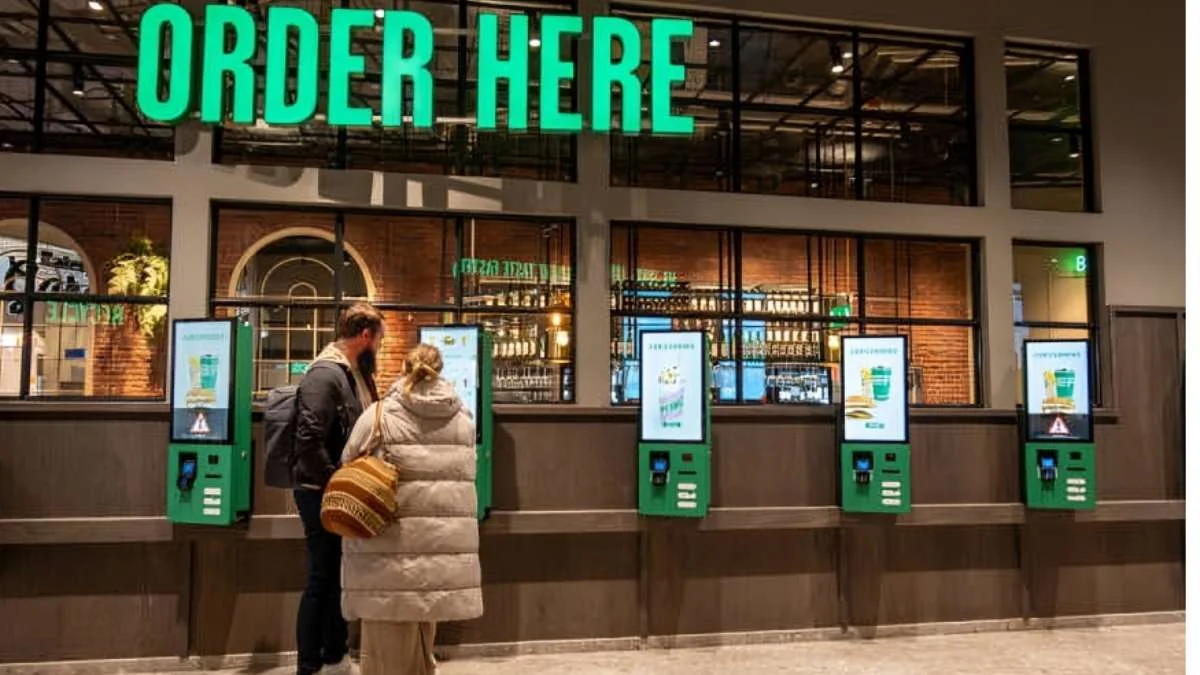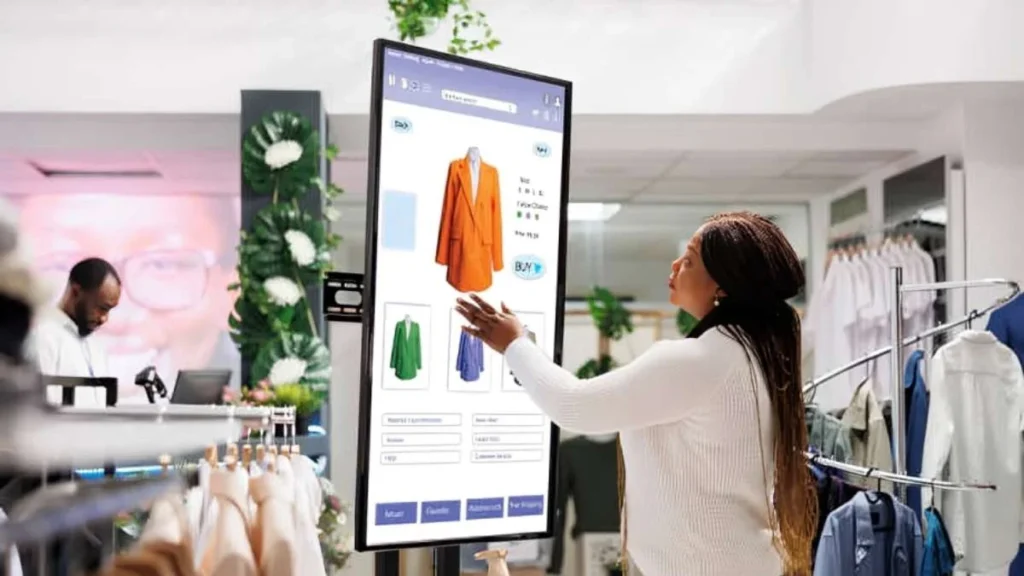Tech
How to Incorporate Technology into Kiosk Interior Design for Enhanced Customer Engagement

In today’s fast-paced retail environment, kiosks have become increasingly popular for businesses looking to enhance customer engagement and streamline operations. With the advent of technology, incorporating innovative solutions into kiosk interior design can significantly impact customer experience and drive sales. In this article, we’ll explore effective strategies to integrate technology into kiosk design, ensuring a memorable and engaging experience for customers.
Table of Contents
How to integrate technology into kiosk design?
1. Interactive Touchscreens
One of the most effective ways to engage customers is through interactive touchscreens. These devices can serve multiple purposes, including product browsing, ordering, and customer feedback.
- Product Catalogs: Incorporate large, easy-to-navigate touchscreens that allow customers to browse products and view detailed information. This not only enhances the shopping experience but also reduces the need for physical inventory on display.
- Self-Service Ordering: For food and beverage kiosks, self-service touchscreens enable customers to place orders at their own pace. This minimizes wait times and allows for customization, improving overall satisfaction.

2. Augmented Reality (AR) Experiences
Augmented reality technology can elevate the kiosk experience by providing immersive interactions that engage customers on a deeper level.
- Virtual Try-Ons: Fashion and beauty kiosks can utilize AR to allow customers to virtually try on clothes, accessories, or makeup. This interactive experience can drive sales by providing customers with a fun and engaging way to make purchasing decisions.
- Product Visualization: For furniture or home decor kiosks, AR can help customers visualize how products would look in their own space. By scanning a QR code or using an app, customers can see virtual representations of products in real time.
3. Digital Signage
Digital signage is a powerful tool for conveying information and promoting products within a kiosk. It can dynamically showcase advertisements, promotional offers, or product highlights.
- Promotional Content: Use vibrant digital displays to highlight special offers, new arrivals, or seasonal promotions. This keeps the kiosk fresh and engaging, encouraging repeat visits from customers.
- Dynamic Menus: For food kiosks, digital menus can be updated in real time, allowing for quick changes based on inventory levels or pricing adjustments. Eye-catching visuals and animations can also entice customers and influence their choices.
4. Mobile Integration
Integrating mobile technology into kiosk design enhances customer engagement and streamlines the shopping process.
- Mobile Apps: Encourage customers to download a mobile app that connects to the kiosk. The app can provide personalized recommendations, loyalty rewards, and exclusive discounts, enhancing the overall shopping experience.
- QR Codes: Incorporate QR codes within the kiosk design that customers can scan with their smartphones. This can link to product information, special offers, or even customer surveys to gather feedback.

5. Contactless Payment Options
As consumer preferences shift towards convenience and safety, integrating contactless payment solutions into kiosk design is essential.
- Mobile Payment Systems: Implement mobile payment options like Apple Pay, Google Wallet, or other digital wallets. This not only speeds up the transaction process but also caters to tech-savvy customers who prefer cashless transactions.
- Self-Checkout Features: Allow customers to complete their purchases directly at the kiosk, minimizing interaction with staff while maintaining a seamless checkout experience. This is especially beneficial in high-traffic areas where efficiency is crucial.
6. Social Media Integration
Leveraging social media can enhance customer engagement and promote your kiosk to a wider audience.
- Social Media Walls: Create a dedicated space within the kiosk that displays real-time social media feeds, showcasing customer posts, reviews, or hashtags related to your brand. This not only encourages customers to engage online but also fosters a sense of community.
- User-Generated Content: Encourage customers to share their experiences on social media by offering incentives, such as discounts for tagging your kiosk in their posts. This can help build brand loyalty and attract new customers.
7. Customer Feedback Systems
Incorporating technology to gather customer feedback is essential for improving service and enhancing engagement.
- Feedback Kiosks: Place dedicated feedback kiosks within or near the main kiosk. Customers can quickly rate their experience or provide comments using touchscreens, enabling businesses to gather valuable insights.
- Digital Surveys: Integrate digital surveys into the checkout process, asking customers about their experience and satisfaction. This feedback can be used to make informed decisions and enhance the overall customer experience.
8. Personalization through Data Analytics
Using data analytics can help businesses tailor their offerings to meet customer preferences.
- Customer Profiles: Implement systems that track customer behavior, preferences, and purchase history. This data can be used to create personalized experiences, such as tailored product recommendations or promotions based on previous interactions.
- Targeted Promotions: Utilize data analytics to send targeted promotions or offers through mobile apps or digital signage. By understanding customer behavior, businesses can create marketing strategies that resonate with their audience.
9. Enhanced Connectivity
Providing customers with seamless connectivity can improve their overall experience while using the kiosk.
- Free Wi-Fi Access: Offering free Wi-Fi in and around the kiosk encourages customers to linger and engage with digital elements, such as browsing products online or sharing their experiences on social media.
- Charging Stations: Integrate charging stations for mobile devices within the kiosk design. This not only attracts customers but also encourages them to spend more time interacting with the kiosk while their devices charge.
10. Virtual Reality (VR) Experiences
Virtual reality can create unique experiences that leave a lasting impression on customers.
- Immersive Experiences: Use VR headsets to transport customers into an interactive world related to your brand or products. For example, a travel kiosk could offer virtual tours of destinations, providing customers with a taste of their travel experiences.
- Training Simulations: If applicable, use VR for training employees on customer service best practices, ensuring that staff is well-equipped to engage with customers effectively.
Conclusion
Incorporating technology into kiosk interior design is essential for enhancing customer engagement and creating memorable experiences. By leveraging interactive touchscreens, augmented reality, digital signage, mobile integration, and more, businesses can transform their kiosks into dynamic spaces that capture attention and drive sales.
As technology continues to evolve, staying ahead of the curve in kiosk design will be crucial for businesses aiming to thrive in today’s competitive retail landscape. By embracing these innovative solutions, kiosk owners can foster deeper connections with customers, improve operational efficiency, and ultimately achieve long-term success.
Looking for more? Explore our blog for valuable tips and the latest updates!
-

 GENERAL2 months ago
GENERAL2 months agoUncovering the World of кинокрадко: The Dark Side of Film Piracy
-

 GENERAL3 weeks ago
GENERAL3 weeks agoUnveiling the Art of преводсч: How Translators Bridge Language Barriers
-

 YOGA1 year ago
YOGA1 year ago4 Person Yoga Poses for Beginners
-

 GENERAL2 months ago
GENERAL2 months agoThe Journey of iamnobody89757: From Anonymous User to Internet Sensation























